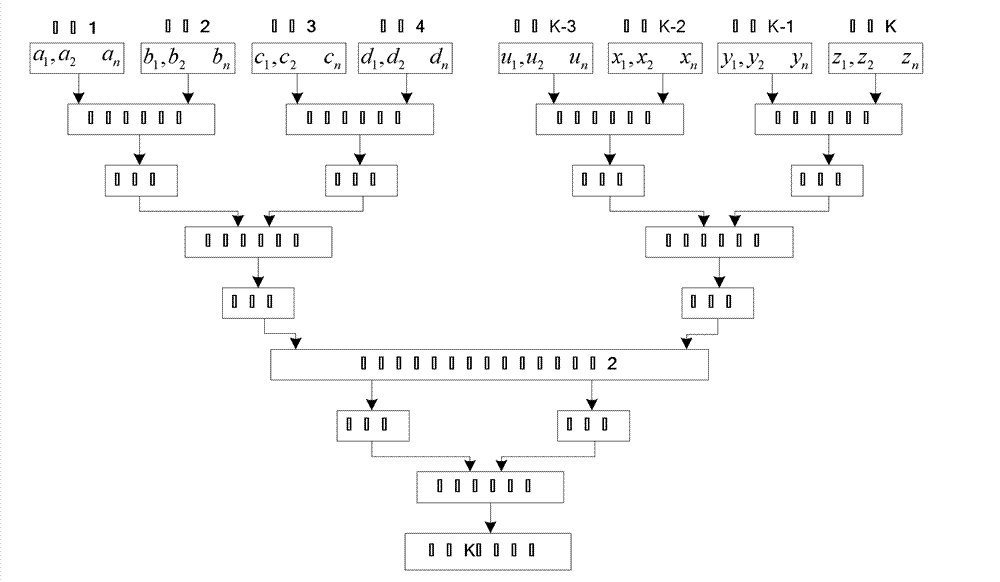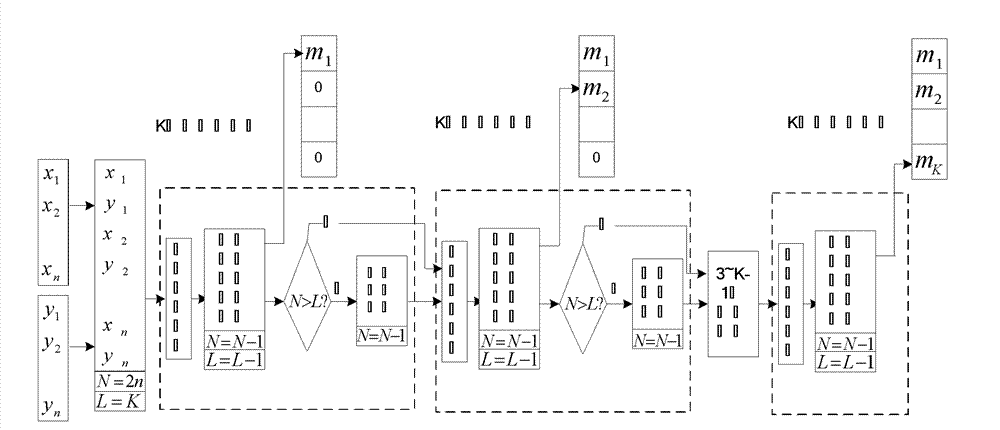Multiple-input multiple-output (MIMO) signal detection method based on breadth-first tree search
A technology of tree search and signal detection, which is applied in the field of MIMO receivers, can solve problems such as high complexity and inconvenient hardware implementation, and achieve the effects of reducing complexity, saving complexity and processing time, and saving processing time
- Summary
- Abstract
- Description
- Claims
- Application Information
AI Technical Summary
Problems solved by technology
Method used
Image
Examples
Embodiment Construction
[0036] The specific implementation process of the present invention will be described in detail below in conjunction with the accompanying drawings.
[0037] Reference attached figure 1 The specific implementation steps of the detection method of the present invention are as follows:
[0038] Step 1: System preprocessing steps:
[0039] 1a) For the received N R Dimension received signal r and N R ×N T The real-numbered channel matrix H is processed to obtain 2N R Real number receiving vector r Re With 2N R ×2N T Real matrix H Re , And determine the corresponding real number constellation point set Ω, for QPSK modulation signal Ω = {1, -1}; 16QAM modulation signal Ω = {1, 3, -1,-3}; 64QAM modulation signal Ω = {1, 3 , 5, 7, -1, -3, -5, -7};
[0040] The real number processing is carried out according to the following formula:
[0041] Re ( r ) Im ( r ) = Re ( H ) - Im ( H ) Im ( H ) Re ( H ) ...
PUM
 Login to View More
Login to View More Abstract
Description
Claims
Application Information
 Login to View More
Login to View More - R&D
- Intellectual Property
- Life Sciences
- Materials
- Tech Scout
- Unparalleled Data Quality
- Higher Quality Content
- 60% Fewer Hallucinations
Browse by: Latest US Patents, China's latest patents, Technical Efficacy Thesaurus, Application Domain, Technology Topic, Popular Technical Reports.
© 2025 PatSnap. All rights reserved.Legal|Privacy policy|Modern Slavery Act Transparency Statement|Sitemap|About US| Contact US: help@patsnap.com



